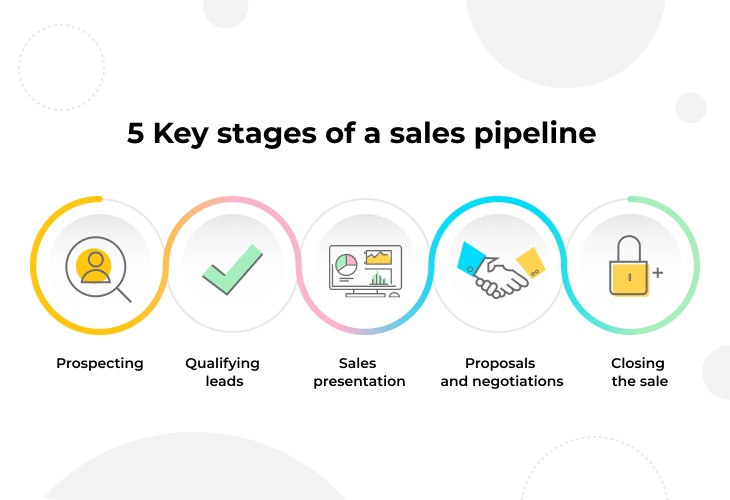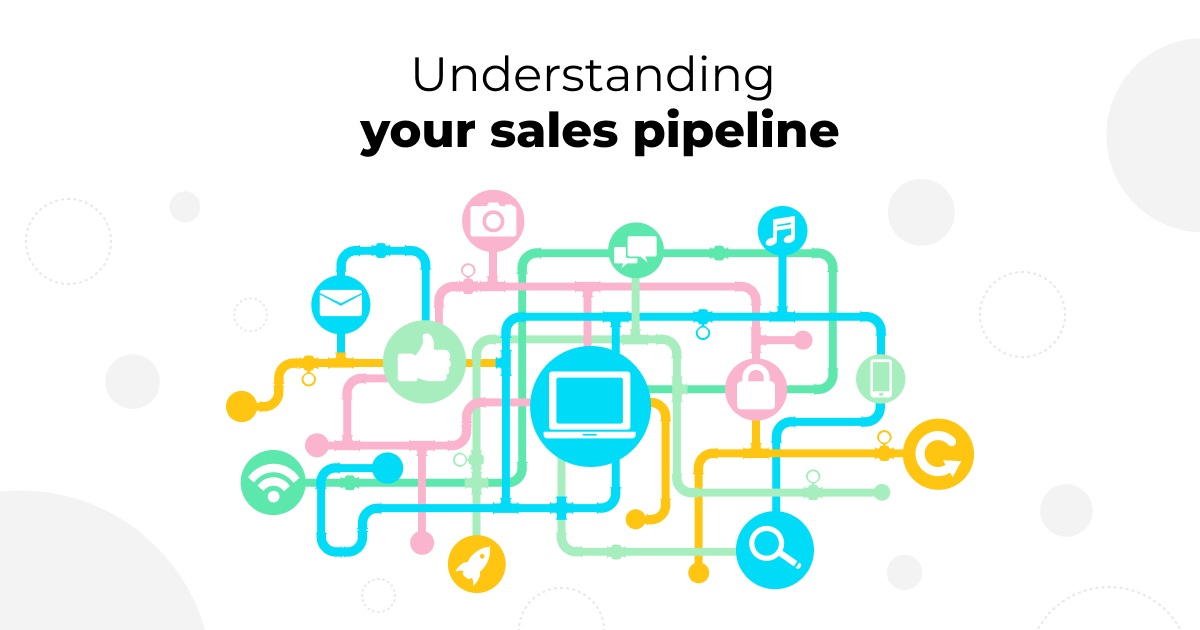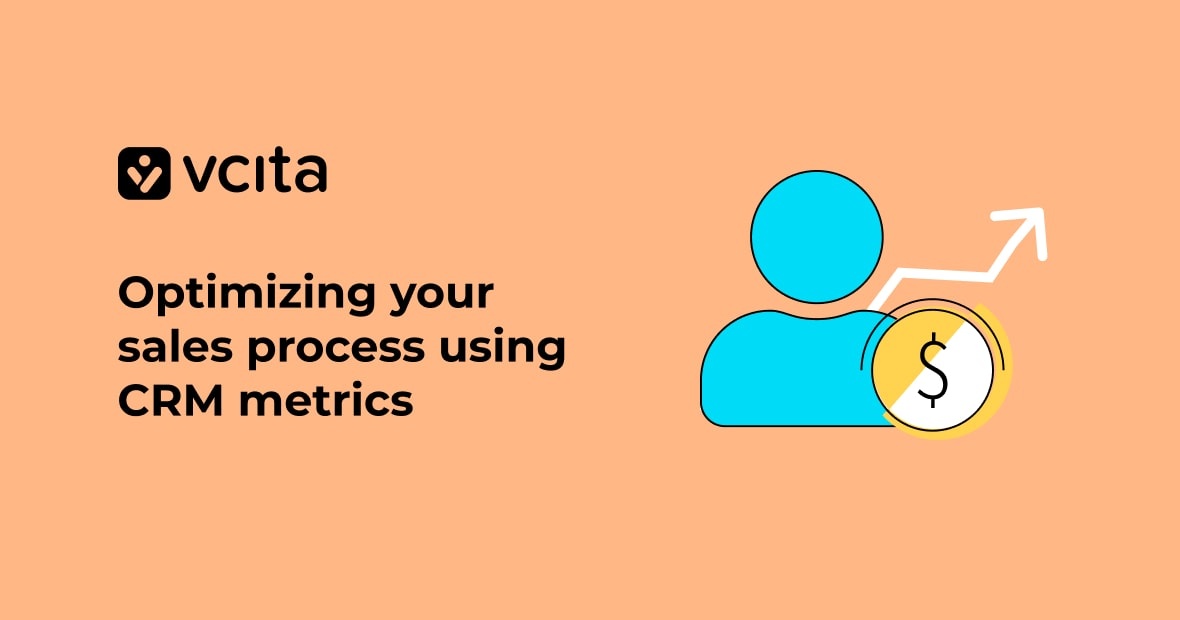Sales pipeline management for small businesses is a crucial aspect of sustaining growth and success. In this article, we’ll explore key strategies that can enhance the efficiency of your sales pipeline. These insights have proven to be highly effective in maintaining a consistent flow of new customers. By implementing these best practices, your small business can experience significant growth in its sales pipeline management.
What is sales pipeline management and why is it important?
A sales pipeline is the lifeblood of any small business. It’s a visible way to track your progress in selling a product or service and turns scattered leads into real sales opportunities.
Managing your pipeline effectively is key to growth and stability. Here are a few reasons why:
- It gives you an at-a-glance view of potential deals so you can focus your efforts. You’ll be able to see what’s about to close, what needs nurturing, and what deals have gone cold.
- You’ll spot trends and patterns to optimize your sales operations. It will enable you to notice what’s working to generate quality leads so you can double down on those efforts, as well as see where leads drop off so you can make improvements.
- It helps you forecast sales and ensures a steady cash flow. With visibility into what’s in the pipeline, you can estimate how much revenue is on the horizon and plan accordingly.
- You’ll never miss an opportunity or let one slip through the cracks. A well-managed pipeline provides alerts to prompt follow up and prevents deals from going dormant.
- It allows you to evaluate the health of your business. If the pipeline is sparse, it’s time to ramp up lead generation. If it’s booming, you may need additional sales resources to bring deals to a close.
In summary, a sales pipeline is the heartbeat of your business. Put in the work to build a robust pipeline management process, and you’ll reap the rewards of increased sales, predictable revenue, and a thriving company.
5 Key stages of an effective sales pipeline management

To build an effective sales pipeline, you need to define the key stages your leads and deals will progress through. The typical stages are:
Prospecting
This first stage is all about finding new potential customers. Make a list of your ideal clients and search places like LinkedIn, Facebook groups, and industry events to discover new leads. Reach out and start building relationships. The more prospects you have, the more sales opportunities will emerge.
Qualifying leads
Not every lead will be a good fit, so evaluate each prospect to determine if they meet your criteria for an ideal customer. Look at factors like budget, timeline, and needs to qualify promising leads and move qualified leads to the next stage.
Sales presentation
Now you get to showcase how your product or service can meet the needs of qualified leads. Share details about what you offer, your experience, credentials, and past successes. Aim to get prospects excited about the benefits and value. Ask good questions to make sure you fully understand their needs.
Proposals and negotiations
For interested prospects, prepare a customized proposal outlining solutions, timelines, and costs. Be prepared to negotiate to reach an agreement that works for both parties, and make compromises when possible to keep the deal moving forward.
Closing the sale
Once all your hard work has paid off and you’re ready to close the sale, review and sign contracts, accept payment, and onboard the new client. Celebrate this win and look for referrals from your latest happy customer.
It goes without saying that once you’ve made a sale, there is also something called post-purchase, which is the work you put into nurturing your new client to keep them around. Make sure you have a steady plan for how to keep your clients coming back and your business booming.
Must-have tools for sales pipeline management
To effectively manage your sales pipeline, certain tools are must-haves. As a small business owner, you need solutions that are affordable yet robust enough to help you organize and optimize your sales process.
CRM software
A customer relationship management or CRM tool is essential for tracking your leads and opportunities. options like vcita’s CRM allow you to log contact details, record interactions, set reminders, and monitor deal progress. They help ensure no lead slips through the cracks and you make the most of every opportunity.
Pipeline management
Robust CRM tools often include pipeline management features to visualize your sales funnel. You can see how many leads are at each stage, forecast sales, and ensure you have enough volume to meet your targets. Look for a tool that lets you customize pipeline stages to match your unique sales process.
Lead scoring
Prioritize your leads and focus your efforts on the hottest prospects. Lead scoring functionality assigns values to leads based on factors like demographics, behavior, and responses. The higher the score, the more sales-ready the lead. Software that allows customizable lead scoring rules based on your business priorities is most useful.
Reporting and dashboards
Strong reporting and dashboard tools provide an at-a-glance view of key sales metrics and performance indicators. Look for options with pre-built reports on things like lead funnel, opportunities by stage, and sales forecasts. Interactive dashboards that let you drill down into the data and customize views are extremely valuable for optimizing your sales management strategy.
Tips for improving your sales pipeline process
If you want to boost your sales pipeline, focus on fine-tuning your sales process. An organized, optimized pipeline means more leads converted to happy customers. Here are some tips to improve your sales pipeline and increase revenue:
Prioritize your best leads
Identify your most promising leads and focus your sales efforts there first. These “hot” leads are most likely to convert quickly, giving your revenue a boost.
Monitor key metrics
Track things like lead response time, follow up frequency, and conversion rates. Look for areas that could improve and make changes. Small tweaks can lead to big results!
Refine your pipeline stages
Review each stage of your sales process and see if there are any roadblocks. Are leads getting stuck at a certain stage? Remove unnecessary steps and ensure each stage has a clear objective.
Use software to organize it all
Solutions like vcita offer CRM software perfect for managing your sales pipeline. Track leads, automate follow ups, log customer interactions, and more—all in one place. Software can save you time and help you gain insight into your sales process.
Train your team
Make sure your sales reps understand your optimized pipeline process. Provide training and coaching so they can implement the new strategies and convert leads efficiently. An educated team means a high-performing pipeline.
Close more deals and achieve greater success
Optimizing your sales pipeline takes some skill but if you let software help you, you’ll be a pro in no time. Get started by reviewing your current pipeline, setting clear goals, defining your ideal customer, optimizing your follow-up, and tracking key metrics. By making your sales pipeline a priority, you’ll gain valuable insights into your business and see your hard work pay off. The future of your company depends on the actions you take today.




























